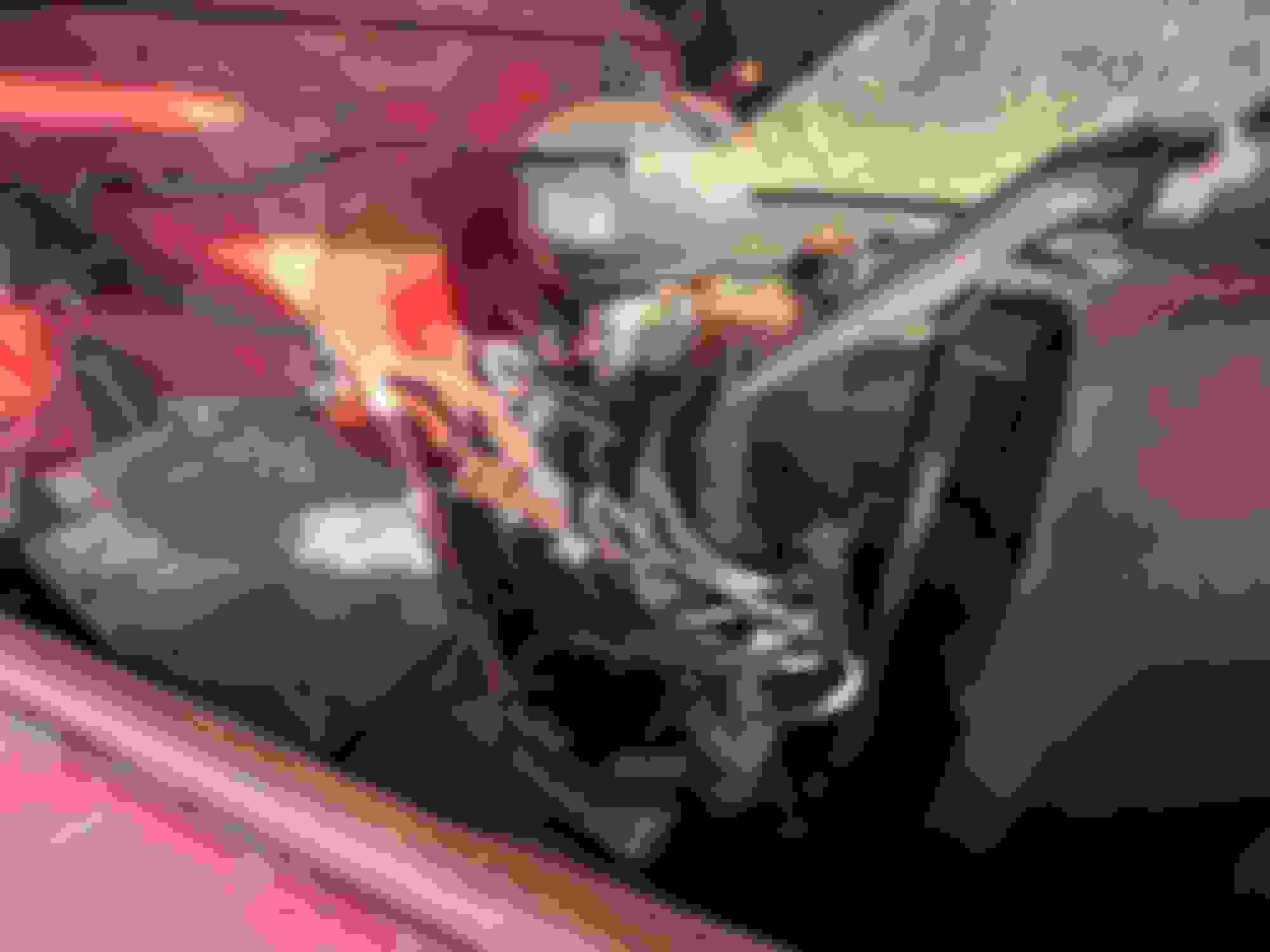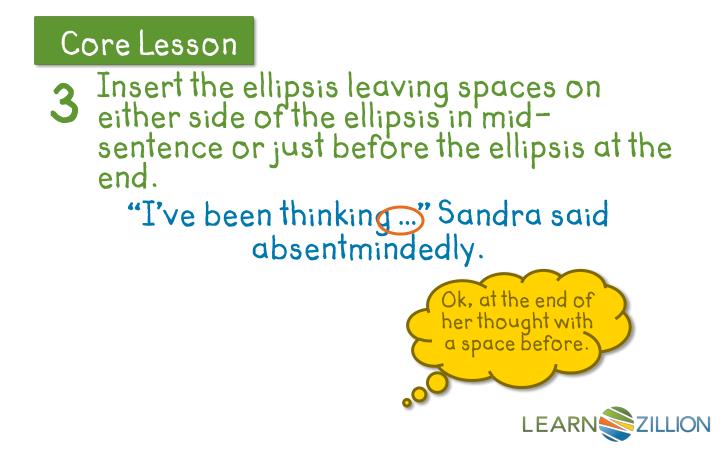A comma marks a slight break between different parts of a sentence. Used properly, commas make the meaning of sentences clear by grouping and separating words, phrases, and clauses. Many people are uncertain about the use of commas, though, and often sprinkle them throughout their writing without knowing the basic rules. Be careful not to turn a run-on sentence into a comma splice.
A comma splice is an error that results from using a single comma to separate two independent clauses. Run-on sentences cannot be fixed with a single comma. For more information, see the WRC handout on comma splices.
In these sentences, that and which are introducing what's known as a restrictive relative clause. This is a clause containing essential information about the noun that comes before it. If you leave out this type of clause, the meaning of the sentence is affected – indeed, it will probably not make much sense at all.
Restrictive relative clauses can be introduced by that, which, whose, who, or whom. Use a semicolon to replace a comma when you use a coordinating conjunction to link independent clauses that already contain commas. In your examples you are using "that" as a demonstrative adjective and "which" as in interrogative.
These are other parts of speech that "that" and "which" can be used as. Most of this discussion is related to using "that" and "which" as relative pronouns to introduce relative clauses. A synonym is simply a word that means the same as the given word. It comes from the Greek "syn" and "onym," which mean "together" and "name," respectively.
When speaking or writing, one of the best ways to expand your vocabulary and to avoid using the same words repeatedly is to use a thesaurus to find synonyms . A thesaurus is a general phrase that describes a type of dictionary that provides a list of words that have the same or similar meaning as the word referenced. For example, if you were to look up the word "beautiful," you might get a listing of more than thirty words that have similar meanings. Use a semicolon to join two related independent clauses in place of a comma and a coordinating conjunction . Make sure when you use the semicolon that the connection between the two independent clauses is clear without the coordinating conjunction.
Use a semicolon to join two related independent clauses in place of a comma and a coordinating conjunction. To mark "bonus phrases." Phrases that add information or clarify but are not necessary to the meaning of a sentence are ordinarily set off with commas. But when the phrase itself already contains one or more commas, dashes can help readers understand the sentence. Prepositions are the words that join a noun, pronoun or the noun phrases and make each sentence complete. However, learning preposition is little tricky and hence, students should be conscious while reading a book or other documents and check the usage of the preposition.
One common type of run-on sentence is a comma splice. A comma splice occurs when two independent clauses are joined with just a comma. Parentheses also signify a break in thought, but they mark an addition of information rather than an interruption like dashes do. Rather than a surprise , parentheses are a gentler insertion in your sentence. Also like dashes, parentheses should be used sparingly.
Too many can break the clarity and flow of your ideas. Another thing to keep in mind is that they are often seen as casual in tone, so make sure they are appropriate for the style of writing you are using. If not, punctuation marks such as commas are often more academically appropriate.
An em dash—inserted by typing Control+Alt+Minus between the words it separates—signals an abrupt break in thought. It can be seen as "surprising" the reader with information. If used judiciously it can mark a longer, more dramatic pause and provide more emphasis than a comma can. If overused, it creates an impression of haste and carelessness and can diminish cohesion in your paragraphs.
Think carefully before peppering your papers with them. I agree that "which" can be used in both restrictive and non-restrictive relative clauses, but "that" is only used in restrictive ones. In modern American English, I think "that" is much more commonly used, "which" is more formal and more likely used in writing. Also, "which" can refer to a whole idea in non-restrictive relative clauses, as in "He robbed a bank, which resulted in him serving five years in prison."
English grammar can be tricky, and one area that many students find particularly difficult is prepositions. A preposition links nouns, pronouns, and phrases to other words in a sentence. And is a conjunction, and in particular a coordinating conjunction.
The other common coordinating conjunctions are or and but. The best way to find a run-on sentence is to determine whether there is more than one independent clause in the same sentence without punctuation. If there are two subjects or a subject and its pronoun (he, she, it, they etc.) in the same sentence and they are not separated with proper punctuation, then a run-on sentence results. A simple test you can use to determine whether to use "which" or "that" is to check the meaning of the sentence when you take out the clause in question. If the clause points to information that is essential to the meaning of the sentence, then you would use "that". If the clause is used to enhance without taking anything away from the meaning of the sentence, then use "which".
How do you use on and on in a sentence A compound-complex sentence with "on and on" contains at least two independent clauses and at least one dependent clause. In contrast to an independent clause, a dependent clause is a group of words that contains a subject and a verb but cannot stand as a complete sentence on its own. A dependent clause does not express a complete idea, so it must always be attached to an independent clause. Coordinating conjunctions can join two nouns, verbs, adjectives, or other types of word. The sentence is sometimes presented as a puzzle, where the solver must add the punctuation.
You can correct a run-on sentence by connecting or separating its parts correctly. There are several easy ways to connect independent clauses. Also, keep "i.e." in regular type rather than bolding or italicizing it.
Em dashes save the day when other punctuation would be awkward. For instance, em dashes can replace parentheses at the end of a sentence or when multiple commas appear in a parenthetical phrase. A complex sentence with "on and on" contains at least one independent clause and at least one dependent clause. Dependent clauses can refer to the subject the sequence/time , or the causal elements of the independent clause.
A simple sentence with "on and on" contains a subject and a verb, and it may also have an object and modifiers. When joining two independent clauses, however, use a comma before the conjunction. A clause is a group of words that contains at least a subject and a verb. An independent clause can stand on its own as a full sentence, expressing a complete thought.
A conjunction is a word that is used to connect words, phrases, and clauses. There are many conjunctions in the English language, but some common ones include and,or,but,because, for, if, and when. The sentence can be given as a grammatical puzzle or an item on a test, for which one must find the proper punctuation to give it meaning.
The intention was for the reader to add the needed punctuation for the sentence to make grammatical sense. For example, if we are speaking of water that has been spilled on the table, there can be one drop or two or more drops of water on the table. The word drop in this example is a count noun because we can count the number of drops. Therefore, according to the rules applying to count nouns, the word drop would use the articles a or the.
For the purposes of understanding how articles are used, it is important to know that nouns can be either count or noncount . In addition, count nouns are either singular or plural . To properly learn the differences between "to" and "for," you need to practice.
A run-on sentence can be fixed by connecting its parts correctly. There are several ways to connect independent clauses. A run-on sentence occurs when two or more independent clauses are connected improperly. Prepositions are the words that are used in sentences to show location or the relationship between the noun or pronoun with the other element in the clause. English speakers usually face confusion in using prepositions like 'in' and 'on'.
We use the word 'in' when we talk about a situation in which something is enclosed by something else. Use this abbreviation in informal documents or as shorthand. You may put "i.e." in a sentence if you are writing an email or a letter to a friend, an informal piece of writing for a class, or a quick business note. If you are writing a formal business document or an academic paper, consider using "that is" or "in other words" instead. You may be unsure how to use "i.e." when you are writing an essay for a class or a brief for a business proposal.
Start by deciding if "i.e." will be effective in the sentence. Then, put "i.e." in a sentence properly using commas so it is grammatically correct. With a few basic steps, you can use "i.e." like a pro in no time. The abbreviation 'e.g.' can be used in a sentence to provide examples and clues.
Learn when and how to use 'e.g.' in a sentence, keeping in mind how it interacts with punctuation, like parentheses, commas, and semicolons. Related to the use of 'that' clauses as a subject is the more common phrase "The fact that..." to introduce a sentence. While both forms are correct, it is much more common to begin a sentence with the phrase "The fact that...." 'That' clauses can introduce a phrase acting as the subject of a sentence.
This use of 'that' clauses is somewhat formal and is not common in everyday speech. The word 'that' is a common word in English that is used in many different ways. Did you notice the use of 'that' in the previous sentence? In this case, 'that' was used as a relative pronoun as a complement.
Often 'that' can be used or left out of a sentence entirely. For example, many English students know you can leave out 'that,' depending on the instance. This guide to the use of 'that' will help you understand when to use the word, as well as when it's okay to leave it out.
When using "of which" to begin a relative clause, first you must place a comma after the noun. Next, add "of which." Finally, write the rest of the clause to better explain the noun. The phrase "of which" can only appear at the beginning of a relative clause, a special type of clause that is used to further explain another part of the sentence in which it appears.
These are two words that cause a lot of confusion, even fornative-English speakers. So, it's well worth taking a few minutes to know the difference between the two. Below, we've provided an easy guide on understanding the grammatical rules. We've also given some examples on how to use who and whom correctly. If you want to avoid mistakes in using who vs whom, read on.
It would be incorrect to say, 'I drove due to the rain' because there is no noun for 'due to' to modify in the clause 'I drove', and no form of the verb 'to be'. A subordinating conjunction can come at the start of a sentence, but only if the dependent clause is followed by an independent clause. When a subordinating conjunction follows an independent clause, a comma is often not necessary. In general, when the dependent clause contains essential information about the independent clause, don't use a comma. In each of the five "had had" word pairs in the above sentence, the first of the pair is in the past perfect form.
The italicized instances denote emphasis of intonation, focusing on the differences in the students' answers, then finally identifying the correct one. However, if we are speaking of water in general spilled on the table, it would not be appropriate to count one water or two waters -- there would simply be water on the table. Therefore, according to the rules applying to noncount nouns, the word water would use no article or the, but not a. The simplest definition of a noun is a thing and nouns are the basic building blocks of sentences. These things can represent a person, animal, place, idea, emotion – almost any thing that you can think of.


























No comments:
Post a Comment
Note: Only a member of this blog may post a comment.